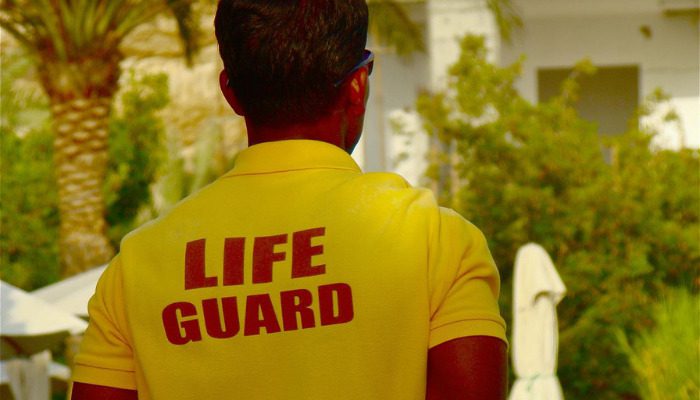Lifeguards have multiple duties, including saving swimmers from perilous situations, assisting CPR, and supplying first aid. They acquire extensive practicum before they’re reliable for swimmers. Comprehending how to get your lifeguard credentials can assist you to join this occupation and execute the required responsibilities to the finest of your capabilities. To acquire lifeguard certification near me from trained professionals near me, visit American Life Guard.
It is an aptitude that is demanded by people for many causes, including those who want joy and happening summer job and parents who would like to comprehend some water security and lifesaving aptitudes to keep their children secure at the coast. Bringing a certified lifeguard category is also beneficial in preserving your loved ones’ security in the backyard pool. You never know when someone’s life may be in danger.
Main Reasons why Lifeguarding job is beneficial
Finding the perfect part-time job while juggling school and social life is no easy feat. A lifeguard may be the perfect match. You’re given a ton of responsibility (great for your resume), but it’s also a ton of fun! Here’s why you should get certified today:
- Business casual, what’s that? Your work wardrobe consists of swimsuits and shorts.
- You will follow in the footsteps of actors Vince Vaughn and Jake Gyllenhaal and rock star Gene Simmons. All three were lifeguards before they became famous.
- Spend your designated breaks from work in the pool. Most people browse the Web during their work breaks, but you get to cool off in the pool on hot summer days. Working during winter? Jump in, and imagine being in a tropical paradise.
- You learn serious skills. How many of your friends know CPR, AED, and other life-saving skills?
- Did you know? The first lifeguard was called Constable of the Surf.
- Your job could be way worse. You could be dressed as a chicken or a pizza handing out flyers for local restaurants.
- It’s rewarding. It’s your job to watch kids and adults experience the joy of swimming, and you keep them safe while doing so.
Requirements to get a lifeguard certification
- Minimum age: 15 years (depending on the state)
- Swim distance using front crawl (freestyle) or breaststroke without resting: 100 yards
- Feet-first surface dive, retrieve a 10-lb. brick and bring it to the surface
- Tread water without using arms for 1 minute.
TRAINING
For starters, you must be at least 15 years of age. This training course will bring you through various rigorous tests both in and out of the pool, in order to assess your knowledge in different scenarios and test your skills in the water. From swimming a distance of 100 yards without resting to retrieving a 10-lb brick from a minimum depth of 8 feet, these tests have been carefully designed to ensure compatibility with aspiring lifeguards for commercial swimming pools.
QUALIFICATIONS
Being a lifeguard calls for prolonged vigilance and situations that could require swimming quickly, so endurance and stamina may be considered requirements for the job. Adequate hand-eye coordination and a normal range of hearing and vision alike are required. During the summer months, especially at large clubs and communities, you will often experience high capacity. No need to panic, just make sure you remain calm and alert, using your hearing and vision to supervise the scene at all times. Since rescuing pool patrons is also part of the job, make sure that you are able to carry, lift, and swim with objects up to 50 pounds and heavier.
Steps to get a lifeguard certification
Here’s a list of six steps on how to get a lifeguard certification:
- Learn to Swim
Think about what you need to be a lifeguard. Of course, swimming is an essential part of being a lifeguard, and taking lessons is one way for you to become comfortable in the water. As you progress in your swim lessons, you’ll learn about the different swimming strokes, breathing techniques, and water safety. Swimming lessons are available for children of all ages.
But what training do you need to be a lifeguard? It is true that knowing how to swim is insufficient training on its own. If you want to know how to be a lifeguard, you will need to be extremely competent at not only swimming but in assisting others who may be struggling in the water.
Join a Swim Team, participating in a swim enables you to improve your swimming ability. Working as a lifeguard demands physical and psychological stamina, and swimming in races prepares future lifeguards for stressful situations.
- Enroll in Lifeguard Certification Training
In order to find out how to get lifeguard certified, look up programs near you. Lifeguard certification training is available through numerous organizations and government agencies. While specific requirements vary by program, training generally covers lifeguard techniques, CPR, AED, first aid, and responding to aquatic emergencies. Swimmers who go through the certification process are taught how to recognize emergency situations, prevent drowning situations, and treat injuries.
At the culmination of a certification class, participants must pass a written test as well as rigorous physical exams. This includes performing CPR, retrieving bricks from the bottom of a pool, and responding to a simulated emergency. Some lifeguard certification programs
- Employment and Career Advancement
Once certified, a prospective lifeguard can find employment opportunities at community pools, local parks, or recreation departments. Job duties depend on the particular environment in which a lifeguard works, but they typically include overseeing swimmers, watching for signs of danger, enforcing adherence to rules, and administering first aid.
As part of the job, lifeguards log incidents and write reports. A lifeguard needs certification for continued employment. Recertification keeps a lifeguard up-to-date regarding lifesaving practices. The requirements for recertification vary depending on the organization.
Conclusion
Lifeguards at pools, beaches, lakes, and other aquatic facilities must be trained to respond to injuries, potential cases of drowning, and other medical emergencies. They must also maintain order and enforce safety rules, and they may be responsible for assisting and instructing guests regarding these rules.



































